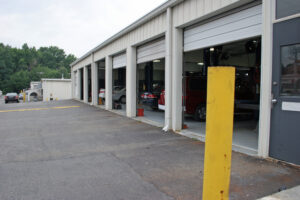
Repair shops excluded from proposed new EPA rules
By onAnnouncements | Business Practices
Collision repair shops have been spared from a proposed new Environmental Protection Agency (EPA) move to update its air emissions reporting requirements (AERR).
The EPA said its proposal would allow it to, beginning in 2027, annually collect hazardous air pollutant (HAP) emissions data on top of the information it already gathers under AERR, which requires states, local agencies and some tribes to report air emissions.
If passed, the rule would mandate air toxics emissions reporting, including from many industrial facilities, either directly or through their state.
“The proposed updates would ensure that EPA has readily available data to identify places where people are exposed to harmful air pollution and to develop solutions,” the EPA said. “It also would provide communities data to understand the significant sources of air pollution that may be affecting them – including data on highly toxic chemicals that can cause cancer and other serious health problems.”
It added that the proposal includes provisions to protect small businesses, “such as allowing certain small businesses to report a facility’s total air toxics emissions instead of detailed data and exempting many collision repair shops from air toxics reporting requirements.”
The definition of “small business” has not been definitively determined for the purposes of the proposal. The comment and review period will determine whether the EPA goes with the Clean Air Act’s definition of a small business encompassing fewer than 100 employees, or Small Business Association’s definition of 500 employees or less.
On top of air toxics reporting, the proposed updates would:
-
- “Make reporting requirements for stationary emissions sources known as ‘point sources’ consistent every year;
- “Phase in earlier reporting deadlines;
- “Require industry to report emissions from certain facilities in Indian country and in federal waters;
- “Add fuel use data reporting requirements for certain sources of on-site electrical generation used to offset electricity demand during peak use;
- “Add requirements for reporting ‘activity data’ for prescribed fires, such as fire location, dates, and number of acres burned.
- “Require owners and operators to electronically report results of source tests. Source tests, also called ‘stack tests,’ are used to measure facilities’ emissions and emission rates.”
The EPA said it excluded the collision repair sector after receiving an analysis from its Small Business Advocacy Panel (SBAR), which estimated the number of small entities expected to report based on EPA’s proposed emissions thresholds.
The analysis showed that the collision sector, as characterized by North American Industry Classification code 811121 (which includes automotive body, paint, interior repair, and maintenance), could be a justifiable exception, the EPA said.
“[The collision repair industry] is unique in that it has the most small entities of any industry that the EPA is considering including in the proposed rule according to the 2017 Economic Census data, and that much smaller number of the largest collision repair facilities (about 2,000) are estimated to fall within the emissions reporting thresholds under consideration,” the EPA said in its report. “… To balance the potential burden with the need for information and considering the large number of businesses in the collision repair industry, the SBAR Panel recommended that the EPA consider explicitly excluding small entities in the collision shop industry from new reporting requirements.”
The EPA published its proposal in the Federal Register late last month and will take comments through Oct. 18. From there, it will review the comments and work on a final rule.
It is holding a virtual public hearing on the proposal Aug. 30., from 10 a.m. through 4 p.m. EST. Preregistration is open through Aug. 25. Those interested in attending can register online.
Images
Main image: ftwitty/iStock
